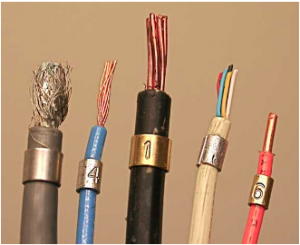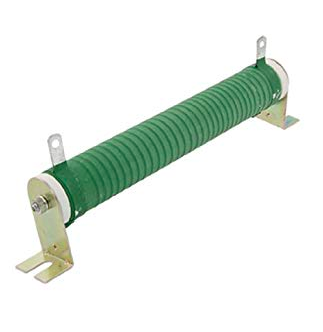While most manufacturers try to build wireless devices, there are still those that can never run without wires. This is evident in today’s homes and offices, where telecommunication devices, video and audio equipment, and other electronic components are being used. Hence, the heart of this article will focus on metal wires and electric current.
What are Wirewound resistors?
This is a type of component where metal wires are used to reduce or control the flow of electric current to a certain level. They are made by winding the metal wire around a metal core. The metal wires serve as the resistance element while the metal core is the non-conductive material. The most commonly used metal wires are Nichrome or manganin because they can operate at a high temperature and provide high resistance to the electric current. Core materials, on the other hand, include plastic, fiberglass, or ceramic.
As the image depicts, the wires are covered with an insulating material that blocks the outside heat. Thus, even at high temperature, heat will not penetrate into the resistor.
Wirewound resistors can range from small surface mount components to a large tubular power resistor. These kinds of resistors are used for electronic equipment where high accuracy and more power dissipation are required. Its stability at a higher temperature and its smaller size made it more popular than metal oxide resistors.
Resistance of wire wound resistors
The resistance of a wire wound resistor is dependent on three factors:
1. Resistivity of the metal wire
Metal wires with high resistance can hinder a large amount of electric current, thus, the wire wound resistor provides high resistance on electric current. On the other hand, metal wires with low resistance block only a minimal amount of electric current. In this case, the wire wound resistor provides low resistance to the electric current.
2. Length of the metal wire
With long metal wires, free electrons have to travel large distances. There is a higher probability, then, that a large number of these free electrons collide with the atoms. Due to this collision, they lose their energy through heat and the remaining small number of free electrons move freely by carrying the electrical current. As a result, only a few amounts of electric current flows through the wire wound resistor, allowing it to provide high resistance.
With shorter metal wires, low resistance is provided because the electrons only travel at a short distance. A large amount of electric current will still flow through the wire wound resistor.
3. Cross-sectional area of the metal wire
Small sectional area means that there will be a small space left for the free electrons to move. In this scenario, the collision of electrons to the atoms are highly possible. Hence, only a small amount of current will flow through the resistor.
This goes differently with a large sectional area where ample space is provided for the free electrons to move. This will result in a large amount of current flow in the resistor.

Types of Wire wound resistors
Power wire wound resistors are non-inductive and therefore can operate at a high temperature. On the other hand, precision wire wound resistors operate at low temperature with high accuracy. Because of this, it is commonly used as a precision resistor in instrumentation.
Advantages vs. Disadvantages
Advantages:
- Cost effective
- Highly accurate
- Highly stable
- Wide range of resistance
Disadvantage:
- Not suitable for high frequencies
Conclusion
In an ever-changing technological world, wires, resistors, and current sensing can be replaced or modified for increased efficiency. However, its root function and use will most probably stay the same. Hence, learning these basics will contribute a lot to the world of engineering.









